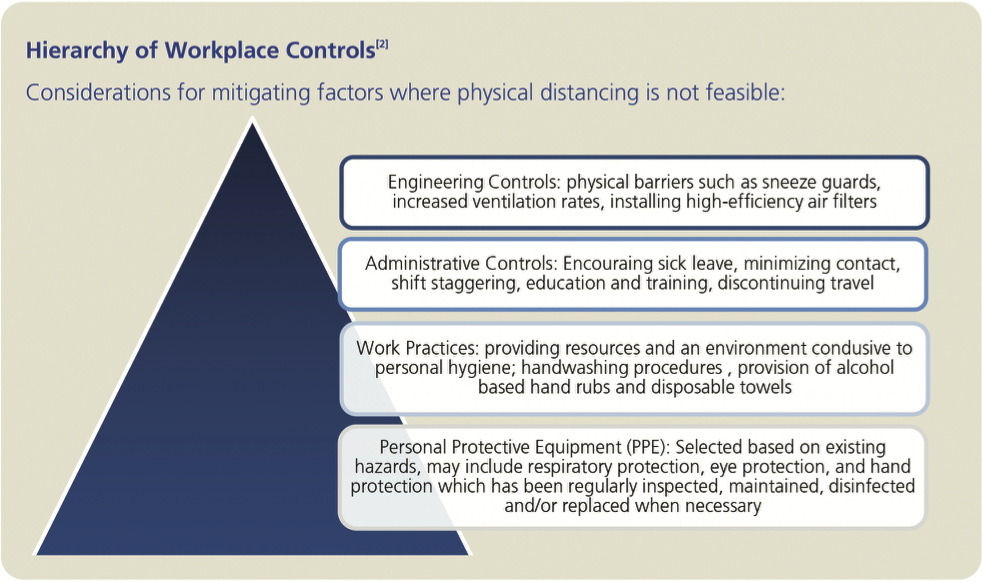by World Wide Specialty Programs, Inc.
Preserving physical distance between individuals has been critical to reducing the spread of COVID-19. As employees return to the workplace, maintaining that physical distance is important for preventing disease spread and making employees comfortable.
Introduction
Preventing and/or mitigating the spread of COVID-19 will rely in part on employer plans for intervention. Non-pharmaceutical interventions to a novel virus and pandemic are referred to as community mitigation.1 These actions can slow the spread of the disease until public health system capacity is prepared and is crucial in the time leading up to vaccine and/or drug availability. COVID-19 is thought to be spread from person-to- person through close contact (approximately 6 feet radius) or through respiratory droplets. Although it is currently thought that people are most contagious when they are exhibiting symptoms, individuals may still spread the disease before showing any signs or while being asymptomatic.2 Further, it is possible to contract the disease after touching contaminated surfaces, then touching any mucous membranes such as the eyes, nose or mouth.
Discussion
In developing a basic infection protection plan, consider your workforce’s demographic factors that may influence their risk.2 Community-based factors which will influence strategies employed by workplaces will be influenced by a number of characteristics such as:1
- Outbreaks in the surrounding community
- Population density
- Transportation
- Access to healthcare and testing facilities
- Availability of personal protective equipment (PPE)
Guidance
Every workplace is unique. Mitigation strategies will vary based on physical layout, operational activities, level of community spread, and other select factors.1
At a minimum, employers should ensure the following mitigation steps:1
- Understand the trend line of local cases and monitor local information sources for updates
- Know the signs and symptoms of the virus and instruct personnel on the appropriate actions to take if employees are symptomatic
- Encourage respiratory etiquette and hand washing
- Discourage sharing of workstations, tools, equipment, phones, etc.
- Update sick leave, alternative work scheduling and telework policies
- Restrict the number of personnel entering areas of the facility
Above this, workplaces with increased exposure such as those with high-population density work, should:1
- Encourage telework for positions with increased risk, and/or those positions that can be accomplished remotely
- Consider cohorting personnel by isolating groups from each other in order to prevent systemic spread
- Implement physical distancing measures such as
- Increased space between employees (at least 6 feet)
- Staggered work schedules
- Decreased social interactions such as meetings, group lunch breaks, etc...
- Limit or cancel travel (especially non-essential)
- Limit or cancel work-related gatherings, conferences, tradeshows
- Consider regular health checks for staff and visitors entering your facility
- Clean and disinfect frequently touched surfaces
Where physical distance cannot be maintained and individuals must work within 6 feet of colleagues, additional controls may be needed following the typical hierarchy of controls.


